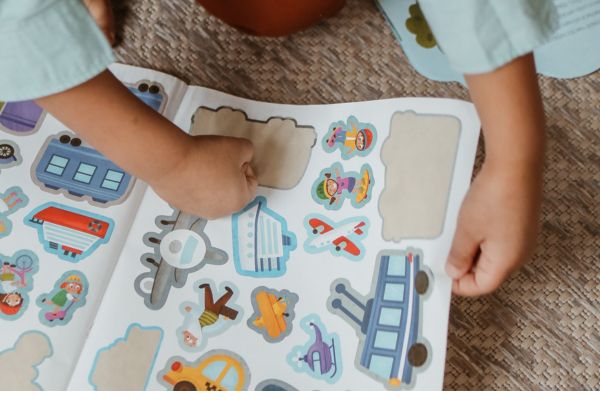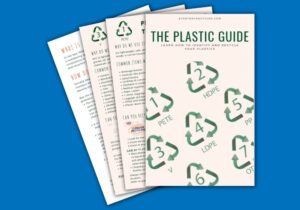The iconic tube-shaped containers of Pringles are high on the list of confusing items when it comes to recycling. Searching Google for an answer to the question “are Pringles cans recyclable?” will yield answers about evenly split 50/50 between yes and no.
So, what’s the truth?
The fact is, the answer is both yes and no. Pringle cans are recyclable. However, it’s a complex process, and many recycling facilities are not set up for that process.
Multiple materials are used to make the containers, including paper, foil, and metal. When more than one material is used to create a single product, it becomes difficult to separate the materials for recycling. Other examples in this in-between category include Tetra Pak containers or cartons for milk or juice.
Want to know if you can recycle other confusing items like milk cartons, egg cartons, packing peanuts, or more? Check our BLOG for answers.
Or why not subscribe to our newsletter? We will send you loads of useful recycling tips and help you buy back all your trash by showcasing brands that are recycling trash into amazing new products.

Did you know: Only 42% of a Pringle is potato. The rest is wheat starch, flour, vegetable oils, and of course, salt and seasoning.
A Short History of the Pringle
Pringles have been around for almost 50 years. Pringle chips surprisingly took some time to take off, and it wasn’t until the 1980s that they became a hit. It’s not clear exactly why they took off, but it’s thought to have something to do with a new commercial starring Brad Pitt. There are now more than 100 different flavors sold in over 140 countries.
Fredric Baur, the Pringles package designer, was so proud of his creation that his ashes were buried in a Pringle package. Baur, who had a Ph.D. in organic chemistry, was hired by Proctor and Gamble to create the packaging specifically for their saddle-shaped crisps. The company needed a package to protect the uniformity of their chips, and Baur’s background seemed up to the challenge.
Baur invented the tube-shaped packaging, and it was a success. Not only did the packaging fit more chips, but it also reduced breakage in transit and saved on shipping costs.

What are Pringles Containers Made Of?
Pringles containers are made up of composite material, foil-lined cardboard. The Pringles packaging also has a plastic lid, a foil seal, and a metal base. All these different materials together make it difficult to recycle.
Composite materials are made up of two or more materials with distinctive properties. The resulting end product is unique and possesses different properties from the original materials. E.g., the end product might be stronger or lighter, making it more useful for specific applications.
Examples of everyday composite materials include reinforced concrete, fiberglass, plywood, papier-mache, and long-life milk cartons. Most products made using composite materials cannot be processed at recycling plants. The technologies used at these plants are unable to break the items down into their separate elements.

What Does The Kellogg Company Say?
In 2017, there was a backlash towards The Kellogg Company, which owns the Pringles brand. Britain’s BBC labeled Pringle cans “the villains” of the recycling world, and The Kellogg Company was criticized over the recyclability of their packaging. Later in 2018, the UK Recycling Association highlighted the company’s packaging issue again, asking Kellogg’s to redesign their packaging to make it easier for consumers to recycle.
The company hit back and pointed out their packaging is designed to keep the snack fresh and secure. They went on to note their packaging does make use of 100% recycled paperboard.
The good news is that Kellogg’s has now set a goal for their packaging to be 100% reusable, recyclable or compostable. The bad news is the target date for this goal is the end of 2025. Time does fly, but five more years to improve packaging seems like too long a period of time.
Maybe we can all let them know we would appreciate a faster timeline.
Can Pringles Cans Be Recycled?
Yes, they can.
But most recycling facilities don’t have the capability to break down the multiple materials which make up Pringles cans.
The ability to recycle also depends on your location. There are currently no available programs for recycling Pringles cans in the United States, the largest consumer of Pringles. The only place where Pringles cans are recyclable is in the UK.
If you live in the UK, you can recycle your Pringle cans with TerraCycle. The Kellogg Company (also known as Kellogg’s), the makers of Pringles, are working with TerraCycle to provide a program where you can take your Pringle containers to a drop-off center. You can find the link here.
Before you do, a couple of tips:
Pull off the plastic lid and metal base, and place both in your recycling bin. Then put the rest of the tube into your landfill bin.
In the UK, Kellogg’s is working with Terracycle, a global leader in recycling hard-to-recycle materials. They are running a program where consumers can take Pringles containers to a drop off-center. With over 200 drop-off locations across the UK, there’s no excuse not to drop off your empty containers.
If you live anywhere other than the UK, you will need to put your used containers into the trash.
Or, if you fancy yourself a crafter, there are also upcycling options for Pringle containers. They’re good for tennis ball storage, a container for pens, or a kaleidoscope for kids.
FIND WHERE TO RECYCLE YOUR PRINGLES CANS IN THE UK
The Best Ways to Re-use Pringles Cans
There are other ways that Pringles cans are recyclable. If you fancy yourself a crafter, there are plenty of upcycling options for Pringles containers. Everything from: tennis ball storage and pasta containers to a container for twine, boot shapers, and a kaleidoscope for the kids or Wonder Woman arm cuffs can be made with these containers.
My personal favorite is the Wonder Woman arm cuffs from Kimberly West of A Girl and a Glue Gun. What a fantastic idea!
We All Need to Chip In
So are Pringles cans recyclable? We’ve learned that Pringles cans can only be recycled in limited locations due to how difficult it is to recycle the materials.
At Everyday Recycler, we suggest you reduce if you can. This means fewer Pringles for me, even if all this talk about Pringles has made me hungry!
If you cannot resist the urge, get that salty snack and follow our discussed instructions today.
And again: let’s hope Kellogg steps up to the challenge and delivers a more recyclable-friendly package before their current goal of 2025.
Want to learn more about hard to recycle items? Check out our other articles:
- How to recycle Tetra Pak containers or cartons for milk or juice.
- Recycled egg cartons,
- Can you recycle packing peanuts,
- or check our BLOG for more.
Sources
- Pringles, Wikipedia
- Roger Harrabin, 2017, Recycling body criticises Pringles and Lucozade packaging, BBC
- Packaging News, 2018, Pringles pack needs ‘proper recyclable redesign’ says Recycling Association, Packaging News
- Waqas Qureshi, 2017, EXCLUSIVE: Kellogg’s hits back over Pringles packaging criticism, Packaging News
- Gill Hislop, 2019, Kellogg ramps up production to cope with Europeans love for Pringles, Bakery and Snacks
- Steve Palace, 2019, The Inventor of the Pringles Can was Actually Buried in One, The Vintage News
- Kayla, 2018, Iconic Packaging: Pringles, The PackagingCompany
- Shalaka Parate, 2017, Why are pringles packaged differently, The Warehouse
- Professor Jim Williams AM FAA FTSE, The science and technology of composite materials, Australian Academy of Science














